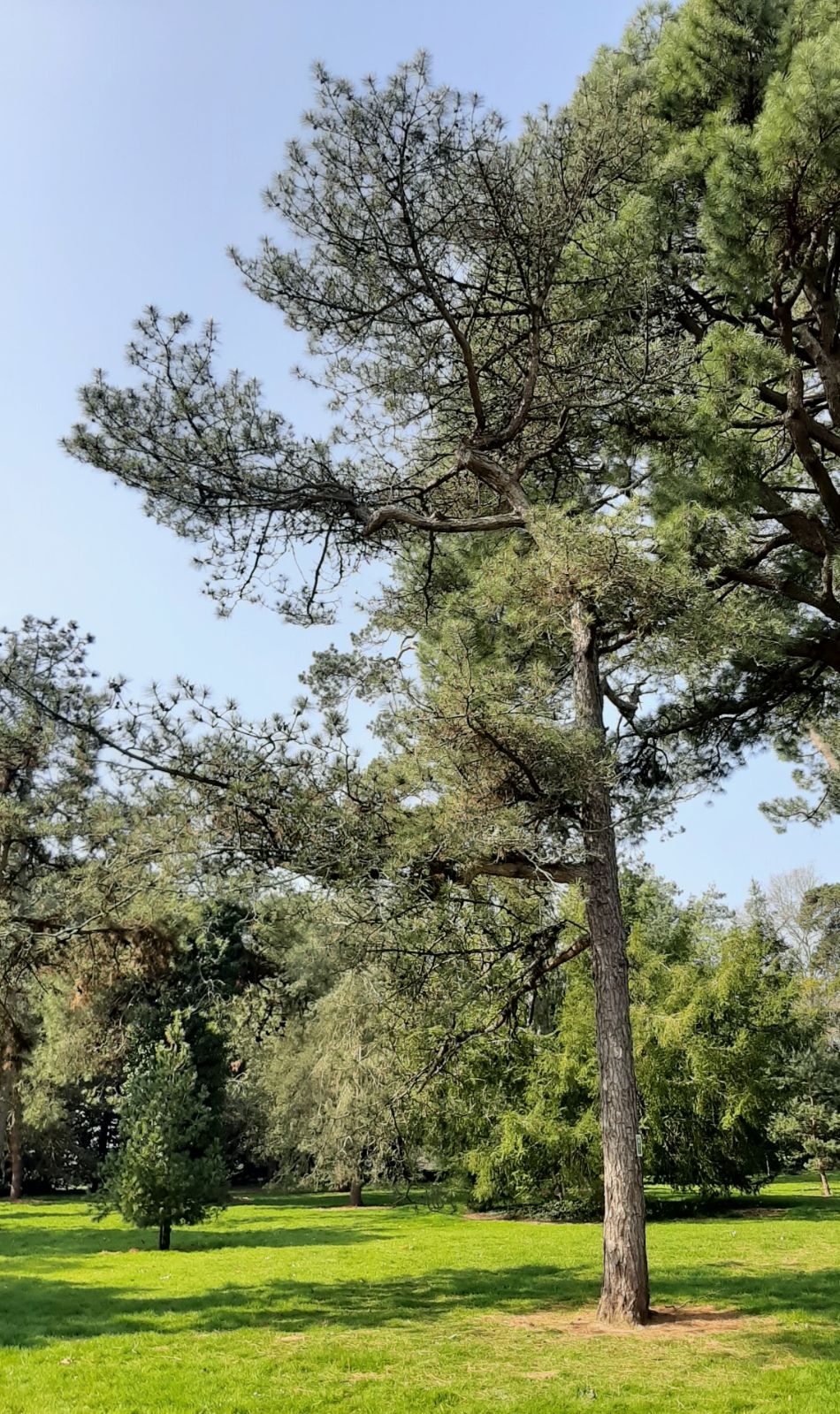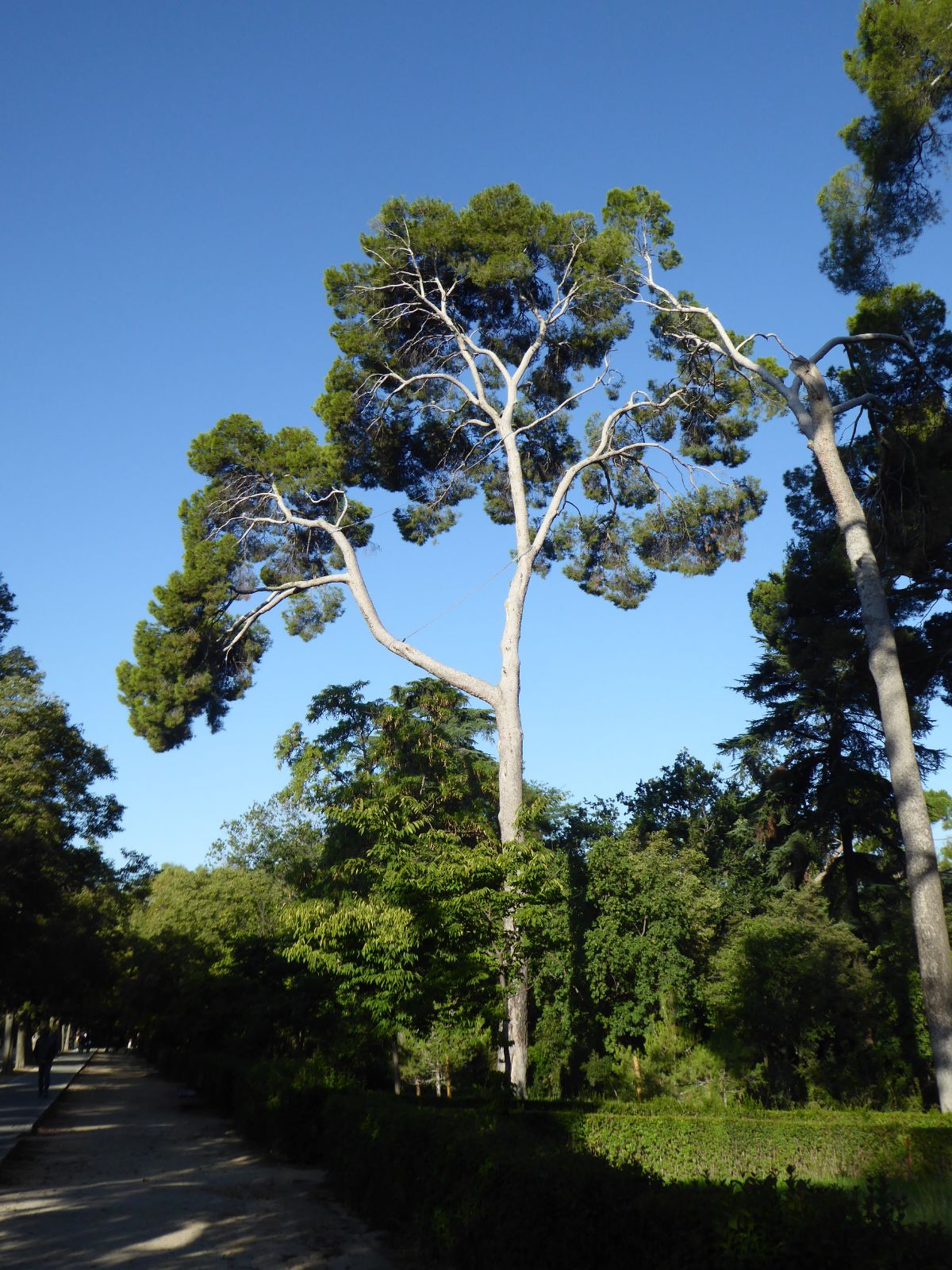Pinus halepensis
Credits
Article from Bean's Trees and Shrubs Hardy in the British Isles
Recommended citation
'Pinus halepensis' from the website Trees and Shrubs Online (treesandshrubsonline.
Genus
Common Names
- Aleppo Pine
Other taxa in genus
- Pinus albicaulis
- Pinus arizonica
- Pinus armandii
- Pinus attenuata
- Pinus ayacahuite
- Pinus balfouriana
- Pinus banksiana
- Pinus bhutanica
- Pinus brutia
- Pinus bungeana
- Pinus canariensis
- Pinus cembra
- Pinus cembroides
- Pinus chiapensis
- Pinus contorta
- Pinus coulteri
- Pinus culminicola
- Pinus densata
- Pinus densiflora
- Pinus devoniana
- Pinus durangensis
- Pinus echinata
- Pinus edulis
- Pinus elliottii
- Pinus engelmannii
- Pinus eremitana
- Pinus flexilis
- Pinus gerardiana
- Pinus greggii
- Pinus × hakkodensis
- Pinus hartwegii
- Pinus heldreichii
- Pinus henryi
- Pinus × holfordiana
- Pinus hwangshanensis
- Pinus jeffreyi
- Pinus johannis
- Pinus koraiensis
- Pinus lambertiana
- Pinus leiophylla
- Pinus longaeva
- Pinus massoniana
- Pinus maximartinezii
- Pinus monophylla
- Pinus montezumae
- Pinus monticola
- Pinus morrisonicola
- Pinus mugo
- Pinus muricata
- Pinus nelsonii
- Pinus nigra
- Pinus oocarpa
- Pinus orizabensis
- Pinus palustris
- Pinus parviflora
- Pinus patula
- Pinus peuce
- Pinus pinaster
- Pinus pinceana
- Pinus pinea
- Pinus ponderosa
- Pinus pseudostrobus
- Pinus pumila
- Pinus pungens
- Pinus quadrifolia
- Pinus radiata
- Pinus remota
- Pinus resinosa
- Pinus rigida
- Pinus roxburghii
- Pinus sabiniana
- Pinus serotina
- Pinus sibirica
- Pinus strobiformis
- Pinus strobus
- Pinus sylvestris
- Pinus tabuliformis
- Pinus taeda
- Pinus taiwanensis
- Pinus teocote
- Pinus thunbergii
- Pinus torreyana
- Pinus virginiana
- Pinus wallichiana
- Pinus wangii
- Pinus yunnanensis
A tree rarely more than 30 to 50 ft high in this country, but 70 to 80 ft in favourable conditions; here it usually forms a rounded head of branches, but is more pyramidal in the south of Europe; young shoots pale grey, glabrous; buds slenderly conical, pointed, non-resinous, about 1⁄2 in. long, with the points of the scales slender, fringed, and recurved. Leaves in pairs (rarely in threes), falling the second and third years, 21⁄2 to 41⁄2 in. long, very slender; leaf-sheath 1⁄4 to 1⁄3 in. long. Cones pointing backwards, 21⁄2 to 31⁄2 in. long, 1 to 11⁄2 in. wide at the base, tapering to a slender point; scales unarmed; stalk 1⁄4 to 1⁄2 in. long; they are produced in pairs, threes, or singly and remain several years on the branches.
Native of S. Europe as far west as Spain and east to Asia Minor; introduced in the 17th century. Although tender in a young state it is hardy enough when once established; several examples at Kew have withstood 31o of frost, and are quite healthy. This species and P. brutia are distinguished among two-leaved pines by the non-resinous buds having recurved scales. The newly cut or bruised young wood has a most pleasant aromatic odour. It is the commonest pine along the south coast of Europe, and reaches perhaps its finest development along the Dalmatian coast, where I have seen it 70 to 80 ft high, remarkably handsome in its heavy plumose masses of foliage. It covers bleak rocky promontories near Dubrovnik. (See P. brutia for differences between it and the present species.)
There are still two trees in the collection at Kew, the measurements of which are 32 × 10 ft at ground level (1969) and 45 × 43⁄4 ft (1970). The species is very rare in Britain and no larger specimen than these has been recorded, except one at Tresco Abbey in the Isles of Scilly, which is 50 × 41⁄4 ft (1970).
From the Supplement (Vol. V)
specimens: Kew, pl. 1843, 40 × 111⁄4 ft at 1 ft (1981) and a younger tree, 36 × 61⁄4 ft (1980); R.H.S. Garden, Wisley, Surrey, 48 × 41⁄2 ft (1983); National Botanic Garden, Glasnevin, Eire, 46 × 53⁄4 ft (1980).


